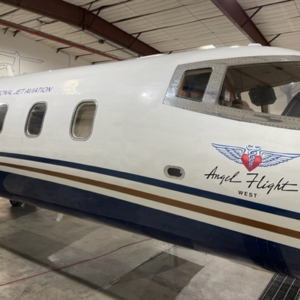By Anne Cantrell, MSU News Service
Montana State University is celebrating the 50th year of the WWAMI Medical Education Program, which allows students from Montana to pay in-state tuition while earning MD degrees from University of Washington’s top-ranking School of Medicine.
Since WWAMI’s inception at MSU in the fall of 1973, more than 1,000 students from Montana have enrolled, according to the program’s records. More than 350 WWAMI graduates currently serve as physicians in the state of Montana.
“There were two goals at the outset of the WWAMI program,” said Martin Teintze, MSU WWAMI director. “One is to provide an opportunity for Montana students to go a top-notch medical school. The other goal was to provide physicians for the state of Montana.
“The first goal has definitely been met,” Teintze continued. “For the second goal, there are more than 350 physicians practicing in the state that are WWAMI graduates. That’s a significant chunk of physicians in our state.”
In addition to Montana, other states participating in the cooperative medical education program are Washington, Wyoming, Alaska and Idaho. Montana students spend 18 months receiving instruction from MSU professors as well as physicians at Bozeman Health Deaconess Hospital. The next two and a half years are spent doing clinical rotations in a variety of Montana locations, as well as Seattle and other sites in the WWAMI region.
Montana’s first WWAMI class had 10 students. Class size grew to 20 in 1975 and then to 30 students in 2013, with support from the Montana Legislature.
Students complete their first 18 months in Bozeman, which means that two groups totaling 60 Montana students are now educated in the program at MSU each fall.
“There was general agreement when Montana joined WWAMI in 1973 that Montana needed more physicians and this was the way to do it,” Teintze said. “It was also the least expensive way to do it. Building a standalone, Montana University System-run medical school would have been vastly more expensive for the Montana taxpayer.”
Teintze expressed appreciation for Montana lawmakers who supported the state’s joining the program in the 1970s and have increased the number of Montana resident students supported by legislative funding in successive decades. Students who do not end up practicing in Montana within a year after completing their education repay a portion of the subsidy they received from the state.
“We appreciate the ongoing support the program has had from the legislature for the past 50 years,” Teintze said. “It’s a long-term investment in the health of Montanans.”
Montana WWAMI students complete the majority of their clinical training in the state at more than 50 sites under the direction of approximately 650 Montana physicians, Teintze said.
“It has really become a Montana program,” Teintze said.
In the mid 2000s, the University of Washington hired a Montana clinical dean, Jay Erickson, who developed a program called TRUST, which stands for Targeted Rural Under Served Track. The program links 12 WWAMI students in each class to underserved communities. Those students spend a couple of weeks in the community in which they are paired before starting medical school as well as a month between the 1st and 2nd year. Then, in their second year, they spend five months in those communities completing part of their clinical training. There are currently 11 TRUST sites in Montana, from Miles City to Libby and from Dillon to Glasgow.
“The objective is to provide students who are interested in this kind of a work a real experience of what it is like to be a small-town physician, and to make sure they are trained by people who have chosen it as their career path,” Teintze said.
Teintze said TRUST has seen success with its goal of increasing the number of WWAMI graduates now practicing in the state’s rural areas, with alumni of that program now practicing medicine in places like Anaconda, Ronan, Hardin, Havre, Lewistown and Miles City.
“We’re hoping this success will grow,” he said.
Teintze said that, after 50 years in operation, the need for the WWAMI program remains strong.
“The average age of the population in Montana is going up, and therefore the need for medical care is also rising,” he said. “We are also facing a wave of physician retirements at a time when the need for more physicians due to the aging population is increasing, and the situation is even more dire in rural parts of Montana.
“With the time it takes to educate a medical student – four years of medical school, plus three to five years of residency afterwards – we need to be planning now for physicians that we need seven to 10 years from now. The prudent thing is to plan ahead.”


